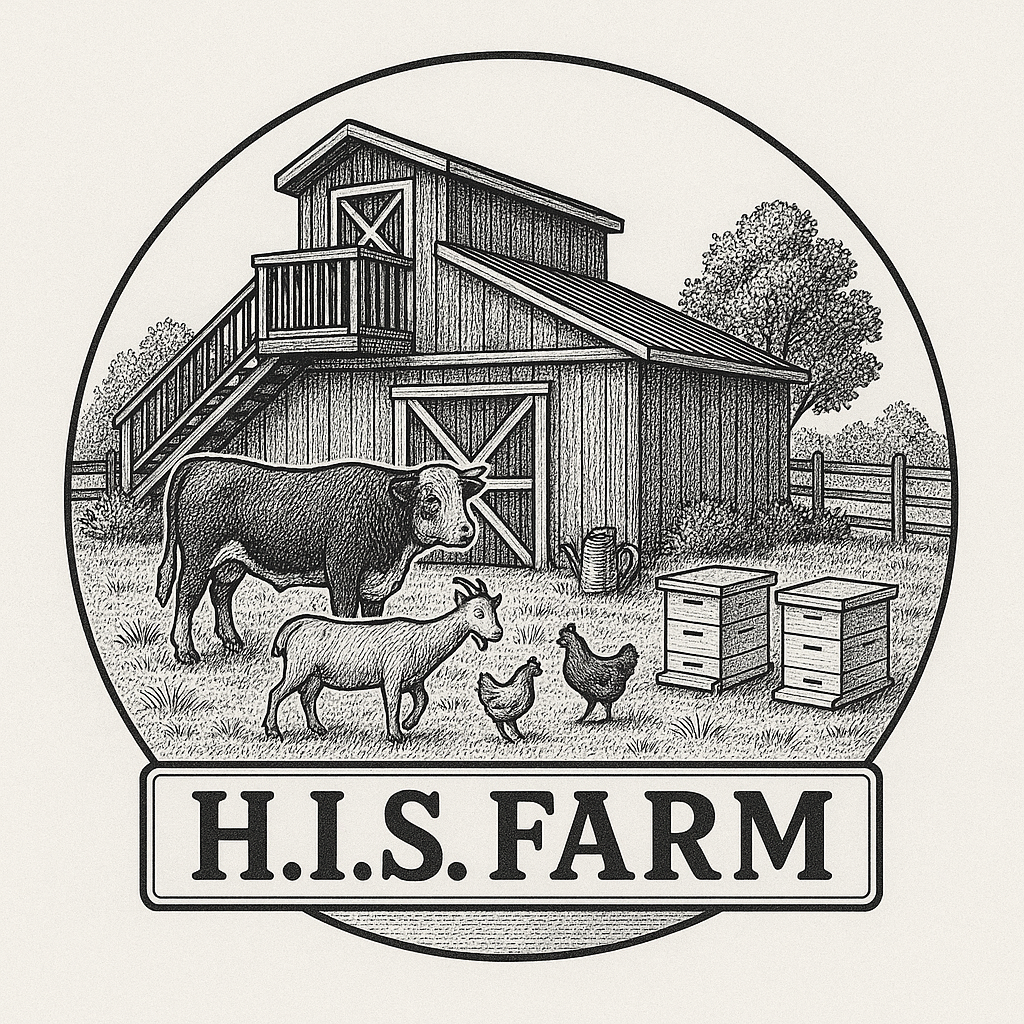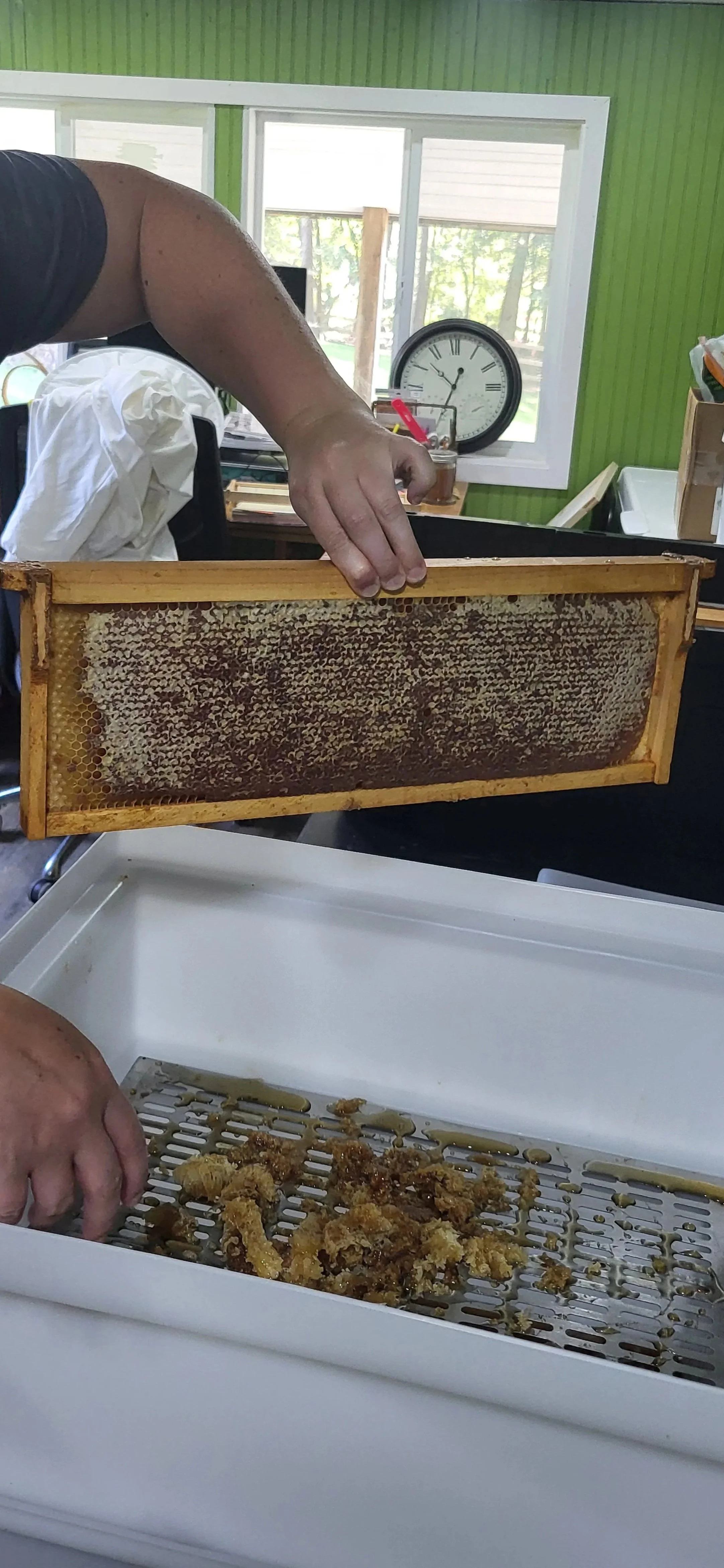Honey Harvest
Capped honey, before harvesting
As Beekeepers, we have the privilege of harvesting honey 2 times a year. Usually in late July and October, but that really varies based on the temperatures and state of the bee frames. This year in late July we got a total of 10 frames off of 2 hives. They rest of the frames were not capped yet (they need to have white wax covering 95% of the frames for us to consider it capped, or ready to harvest) so we left them for the later harvest. Uncapped honey is not at the ideal moisture level yet and will likely crystalize quickly in the jar. The bees know when it is ready, so we just follow their lead and only take the capped honey.
A typical harvest day requires some set up on our part because I want to get the frames back on the hives as quickly as possible so the bees can go back to work on them. Brant and I get suited up and have an empty box ready (inside a black tote so it has a lid). Brant smokes the hive and pulls each frame. He then carefully brushes off any bees that are trying to hang on. I put them in the empty box and close the lid-I don’t need bees joining me in my office while I am taking the honey! We only do a hive at a time so it is easier to keep track of where to return the frames. And, if the bees get mad and come after us (which has happened, I got 7 stings that day!) then we only have 1 hive missing frames and not more. Once we finish a hive (which is typically only 1 box of 10 frames) we bring them to my office where I have the extractor and filters already set up. I quickly scrape the cappings off of each side of the frames and fill the extractor with the open frames. It holds up to 8 medium or small frames at a time-as long as it is balanced it is good. I then turn it on and it spins about 75 rotations a minute for a few minutes. The honey literally flies rights out of the open combs! I flip the frames around and do it again and then the frames are ready to be returned to the hive. We repeat this for each of the 3 hives that we collect honey from and just take whatever we can get.
After harvesting, ready to return to the hive
After all the collecting is done, we allow gravity to work and filter all our honey before it goes into jars. This process takes a while as the honey goes through 5 successively finer filters and there is a lot of honey. This last harvest we got 2.5 gallons of honey. I’ll take all the remaining cappings and wax and clean it up to make something out of it—not sure what yet, I’m just collecting it for now. They best part of the harvest is actually the clean up. I get as much honey and wax as I can out of everything then just sit it all outside and they bees clean it all up! Within about 3 days, it is all perfectly clean! I do wash it, but that’s just because it sat outside.
Fresh honey leaving the extractor into the filters
Bees are truly incredible creatures and they will repair and refill the empty combs after we harvest them! It is an amazing process to be a part of. Don’t worry, we always leave honey for the bees to eat over the winter but we take the extra for ourselves and happily use it in the kitchen. We will harvest again in late October or early November, depending on the weather. We won’t return the frames this time though. It’ll be almost time to put the bees to bed for the winter. The bees have 2 deep boxes full of food and brood that we don’t mess with. We also leave them sugar bricks and wrap the hives in tar paper to help keep in heat during the winter. We may see them on warmer days, but otherwise, we’ll see them again in February or March, where we will start the cycle all over again.



